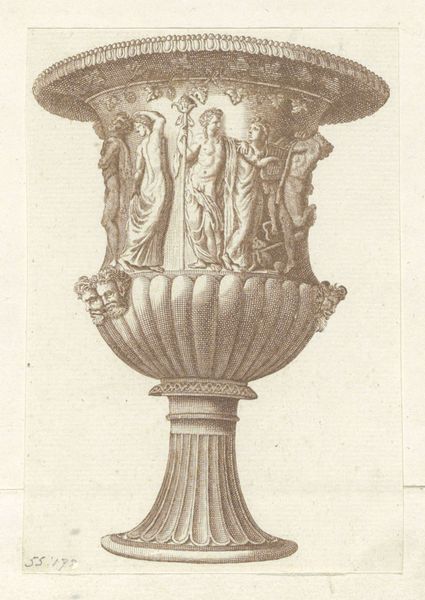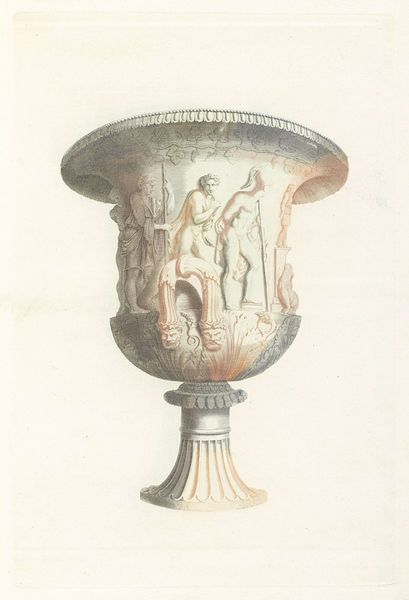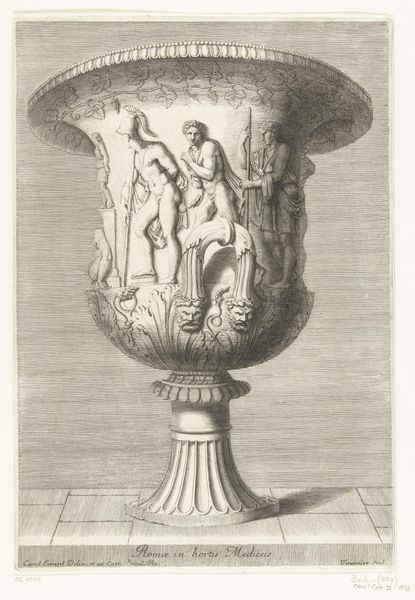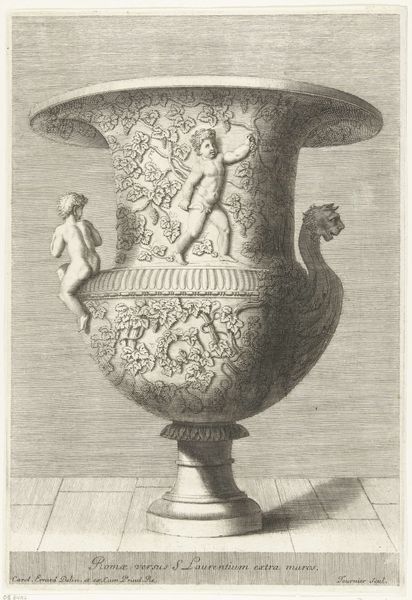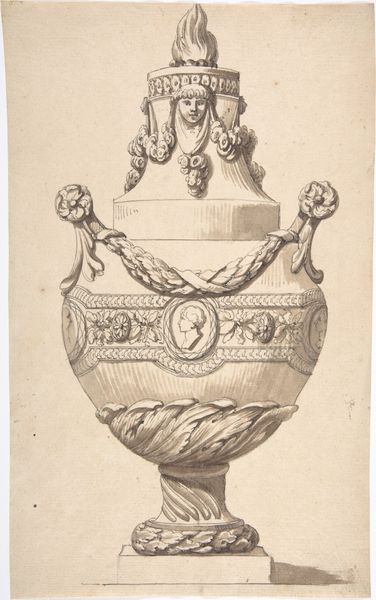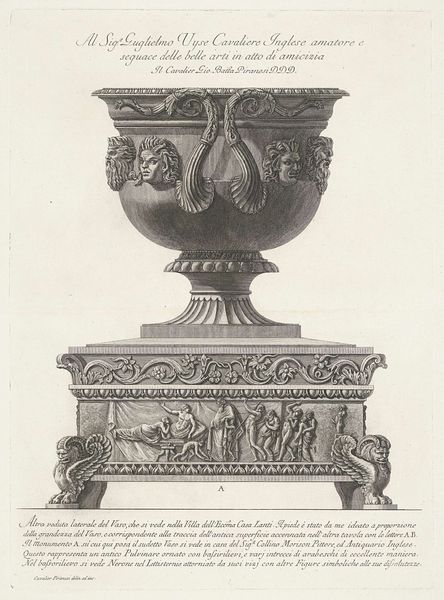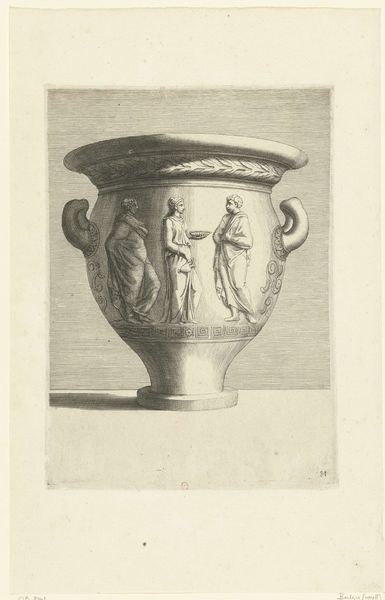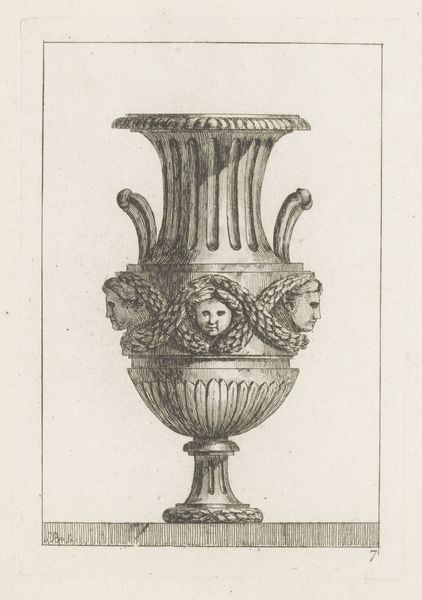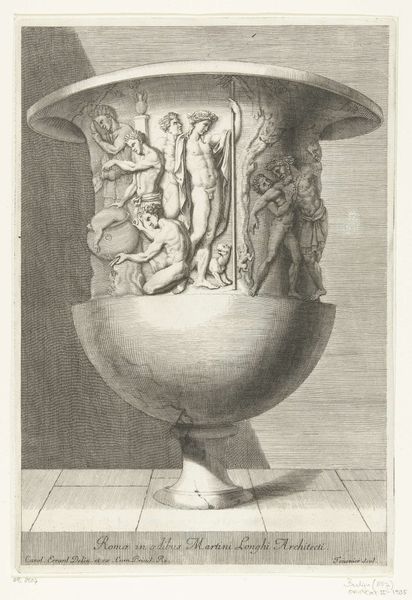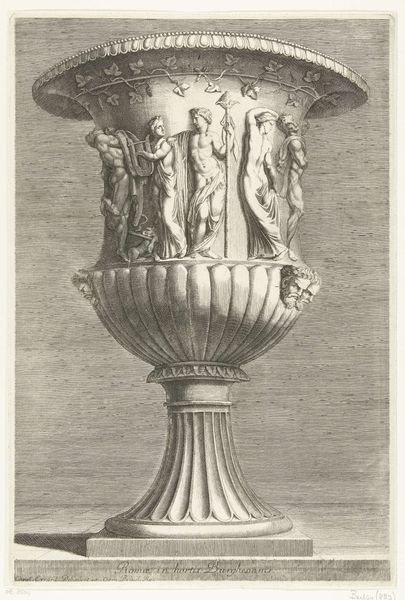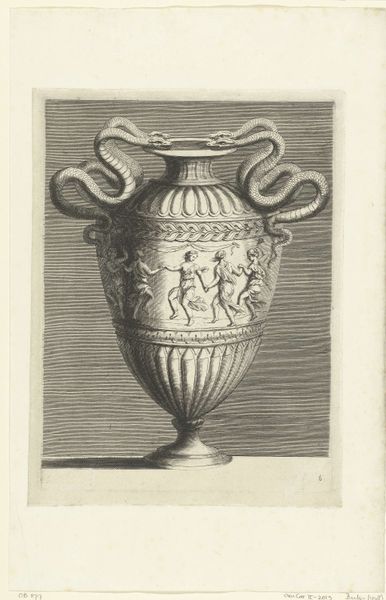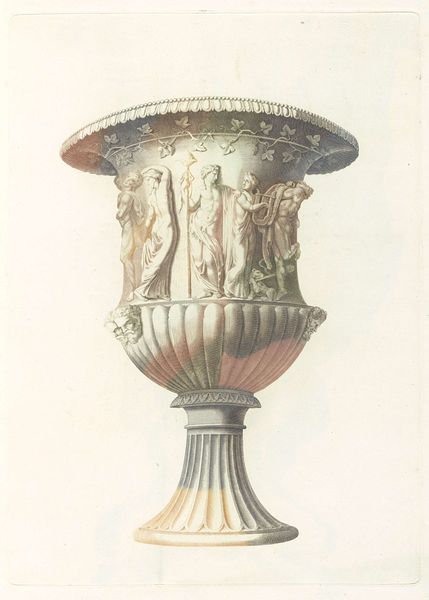
print, sculpture, engraving
#
allegory
#
baroque
# print
#
old engraving style
#
figuration
#
pencil drawing
#
ancient-mediterranean
#
sculpture
#
history-painting
#
engraving
Dimensions: height 106 mm, width 78 mm
Copyright: Rijks Museum: Open Domain
This print of a Medici vase was made by an anonymous artist; its production involved a range of skills. Consider the paper itself, likely handmade, each sheet individually produced by dipping a screen into a vat of pulp. Then, the drawing, carefully composed and rendered with precise lines to create the form, texture, and shading. Finally, the etching process. The artist would have coated a metal plate with wax, drawn through it with a needle, and then submerged the plate in acid. This painstaking work required patience and meticulous skill. Although the image depicts a vase, and has an aesthetic quality, it is also a form of documentation. Prints like this were a key way that designs were circulated and knowledge was transferred. It’s a reminder that even seemingly straightforward images are the result of significant labor, skill, and ingenuity. By considering these aspects, we can appreciate the social and economic context in which such objects were made.
Comments
No comments
Be the first to comment and join the conversation on the ultimate creative platform.
